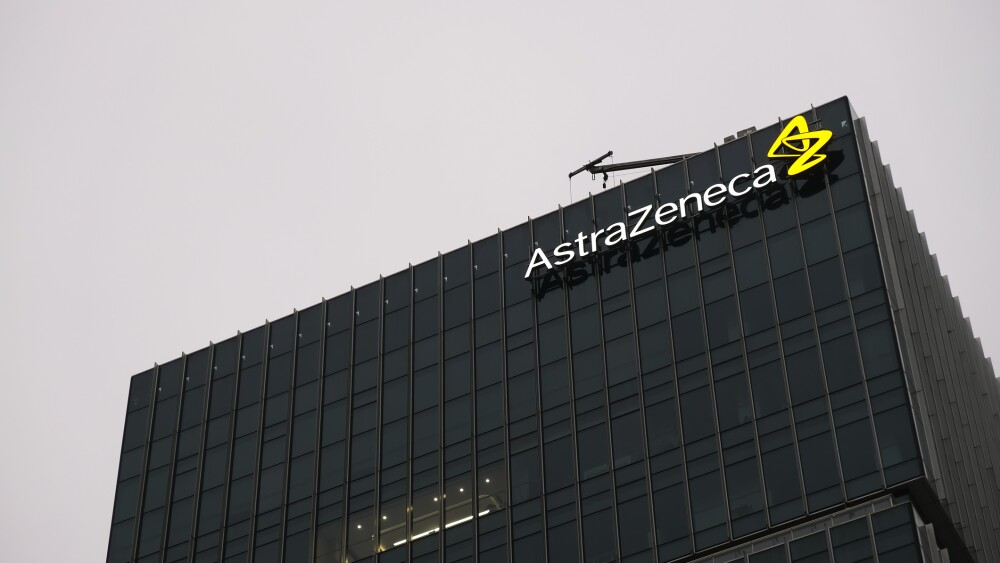Oncocytoma Market Outlook 2025-2035:
The 7 major oncocytoma market are expected to exhibit a CAGR of 5.24% during 2025-2035. The Oncocytoma market is driven by the increasing adoption of non-invasive and minimally invasive diagnostic and treatment options, such as advanced imaging techniques, robotic-assisted surgeries, and image-guided biopsy procedures, which effectively aid in the accurate detection and management of oncocytomas while minimizing patient discomfort and recovery time. These advanced approaches are particularly beneficial in differentiating benign oncocytomas from malignant renal tumors, enabling precise treatment planning and reducing the need for unnecessary radical surgeries. Additionally, the integration of molecular diagnostics and targeted biopsy techniques offers enhanced diagnostic accuracy, reducing the risk of overtreatment and fostering better clinical outcomes. Such approaches are gaining traction due to their ability to provide efficient, patient-friendly solutions with improved safety profiles and reduced hospital stays.
Advances in Early Detection and Diagnostic Technologies: Driving the Oncocytoma Market
Modern diagnostic and treatment technologies are remarkably transforming the Oncocytoma market, improving patient management and clinical outcomes. Advanced imaging techniques, such as multiphasic CT scans, MRI, and contrast-enhanced ultrasound, enable precise visualization and differentiation of oncocytomas from malignant renal tumors, facilitating accurate assessment and treatment planning. Diagnostic innovation includes advancements such as liquid biopsy and molecular profiling, which can be helpful in identifying specific genetic and molecular markers associated with oncocytomas and further guide the management strategies in a personalized direction. Molecular diagnostics including next-generation sequencing and polymerase chain reaction are also being utilized more for chromosomal abnormalities and mitochondrial mutations linked with oncocytomas. Further, as AI is integrated into imaging analytics, the accuracy of the diagnosis increases with the provision for automated classification of the tumor, risk assessment, and treatment follow-up, thus minimizing subjective interpretation. Minimally invasive therapies, such as robotic-assisted partial nephrectomy and image-guided thermal ablation, have been ushered as successful methods without long recovery times and minimal complications. These interventions are preferred over traditional surgical treatments because they help in the preservation of renal functions and minimize hospital stays. Telemedicine platforms have also facilitated remote consultations, second opinions, and follow-up after surgery. This can be particularly useful for regions that have limited access to expert oncologists. Such technologies would ensure timely diagnosis and treatment planning while improving the general welfare of the patient.
Request a PDF Sample Report: https://www.imarcgroup.com/oncocytoma-market/requestsample
Development of Novel Therapies and Pharmacological Treatments: Contributing to Market Expansion
The Oncocytoma market is growing extensively through the introduction of innovative therapies combined with advanced treatment options. Newer therapeutic approaches in the management of oncocytomas, especially complex or chronic ones, such as targeted molecular therapies and biologics, are changing the paradigm of management. The new treatments combine higher efficacy with fewer side effects and a more specific mechanism of action for significantly improved patient outcomes and satisfaction. Research in biological drugs is intensifying, particularly for moderate to severe oncocytomas. Monoclonal antibodies targeting specific pro-inflammatory cytokines such as interleukin-17 and interleukin-1 are gaining attention for their potential to reduce tumor-related inflammation and the underlying immune responses that contribute to the development of oncocytomas. These therapies aim at preventing the pathways through which inflammation may stimulate tumor growth, thereby providing novel avenues for the treatment of aggressive or recurrent cases. The development of drug delivery systems, including nanotechnology-based carriers, liposomal formulations, and hydrogels, allows for highly localized drug delivery to the tumor site, reducing systemic exposure to the therapeutic agents, with decreased risks of adverse effects and improved effectiveness in the overall treatment. Such advancements are particularly relevant to benign tumors such as oncocytomas, where minimizing side effects is critical for maintaining renal function. There is also the increasing appeal of combination therapies that merge molecular-targeted treatments with anti-inflammatory agents or adjunct treatments aiming to modulate the multifaceted nature of the pathophysiology of oncocytomas. These combination therapies have been designed to simultaneously reduce tumor size, control inflammation, and restore tissue. Emerging treatments, such as biofilm-disrupting agents and topical solutions in novel formulations, are becoming popular because they are non-invasive and easy to apply. These approaches are patient-centric, providing effective treatment with minimal recovery time and fewer complications. In addition, the development of personalized treatment strategies that take into account the genetic and molecular characteristics of oncocytomas is driving the shift toward more targeted and individualized care, enhancing clinical outcomes and patient satisfaction.
Buy Full Report: https://www.imarcgroup.com/checkout?id=9912&method=809
Regional Analysis:
The major markets for Oncocytoma include the United States, Germany, France, the United Kingdom, Italy, Spain, and Japan. According to projections by IMARC, the United States has the largest patient pool for Oncocytoma while also representing the biggest market for its treatment. Recent developments in novel treatments have significantly transformed the Oncocytoma market, with innovative therapies such as advanced retinoids, antimicrobial peptides, biofilm-disrupting agents, and hormonal modulators leading the charge. These therapies are designed to more accurately target the underlying etiologies of oncocytomas, including inflammation, bacterial overgrowth, and metabolic imbalances. The development of agents like palmitate-safe Akumsadites has bypassed the limitations of earlier treatment models by opening multiple gene pathways for adaptive, more effective therapies. These agents have proven beneficial in reducing tumor-related inflammation, minimizing bacterial proliferation, and promoting a more balanced cellular environment, which leads to improved clinical outcomes and fewer adverse reactions. In parallel, advancements in diagnostic tools and methodologies have enabled earlier and more accurate detection of oncocytomas, improving both the precision of diagnosis and the ability to tailor treatment plans. These innovations, including advanced imaging systems, molecular diagnostics, and AI-driven tools, have greatly enhanced the capacity to assess tumor severity and identify contributing factors, allowing for timely and targeted treatments with minimal side effects.
Key factors driving growth in the Oncocytoma market include the increasing approval of new treatment guidelines, escalating investments in research and development, and growing collaboration between pharmaceutical companies, diagnostic technology providers, and research institutions. These collaborations are accelerating the development of next-generation treatments and diagnostic solutions, fostering a more integrated approach to managing oncocytomas. AI-powered diagnostic tools, coupled with telemedicine platforms, are playing a crucial role in ensuring that advanced care reaches even remote and underserved areas, democratizing access to cutting-edge treatments. Such technologies are particularly vital in regions where access to specialized oncological care is limited, ensuring timely diagnosis and personalized treatment plans for patients. Regions like North America and Europe remain at the forefront of innovation in the Oncocytoma market, driving global growth through ongoing advancements in treatment options, diagnostics, and healthcare delivery systems. With a focus on precision medicine, minimally invasive procedures, and personalized care, the global Oncocytoma market is poised for sustained growth, offering improved outcomes for patients worldwide.
Key information covered in the report.
Base Year: 2024
Historical Period: 2019-2024
Market Forecast: 2025-2035
Countries Covered
- United States
- Germany
- France
- United Kingdom
- Italy
- Spain
- Japan
Analysis Covered Across Each Country
- Historical, current, and future epidemiology scenario
- Historical, current, and future performance of the Oncocytoma market
- Historical, current, and future performance of various therapeutic categories in the market
- Sales of various drugs across the Oncocytoma market
- Reimbursement scenario in the market
- In-market and pipeline drugs
Competitive Landscape:
This report offers a comprehensive analysis of current Oncocytoma marketed drugs and late-stage pipeline drugs.
In-Market Drugs
- Drug Overview
- Mechanism of Action
- Regulatory Status
- Clinical Trial Results
- Drug Uptake and Market Performance
Late-Stage Pipeline Drugs
- Drug Overview
- Mechanism of Action
- Regulatory Status
- Clinical Trial Results
- Drug Uptake and Market Performance
Ask Our Expert & Browse Full Report with TOC: https://www.imarcgroup.com/oncocytoma-market/toc
IMARC Group Offer Other Reports:
Acromegaly Market: The 7 major acromegaly markets are expected to exhibit a CAGR of 8.1% during 2024-2034.
Renal Cell Carcinoma Market: The 7 major renal cell carcinoma markets reached a value of US$ 4.6 Billion in 2023. Looking forward, IMARC Group expects the 7MM to reach US$ 7.3 Billion by 2034, exhibiting a growth rate (CAGR) of 4.22% during 2024-2034.
Advanced Renal Cell Carcinoma Market: The 7 major advanced renal cell carcinoma markets are expected to exhibit a CAGR of 4.53% during 2024-2034.
Thyroid Cancer Market: The 7 major thyroid cancer markets reached a value of US$ 303.0 Million in 2023. Looking forward, IMARC Group expects the 7MM to reach US$ 1,624.3 Million by 2034, exhibiting a growth rate (CAGR) of 16.49% during 2024-2034.
Medullary Thyroid Cancer Market: The 7 major medullary thyroid cancer markets reached a value of US$ 141.1 Million in 2023. Looking forward, IMARC Group expects the 7MM to reach US$ 405.1 Million by 2034, exhibiting a growth rate (CAGR) of 10.06% during 2024-2034.
Aneurysmal Subarachnoid Hemorrhage Market: The 7 major aneurysmal subarachnoid hemorrhage markets reached a value of US$ 245.9 Million in 2023. Looking forward, IMARC Group expects the 7MM to reach US$ 331.9 Million by 2034, exhibiting a growth rate (CAGR) of 2.76% during 2024-2034.
Contact US
IMARC Group
134 N 4th St. Brooklyn, NY 11249, USA
Email: Sales@imarcgroup.com
Tel No:(D) +91 120 433 0800
Phone Number: - +1 631 791 1145, +91-120-433-0800





